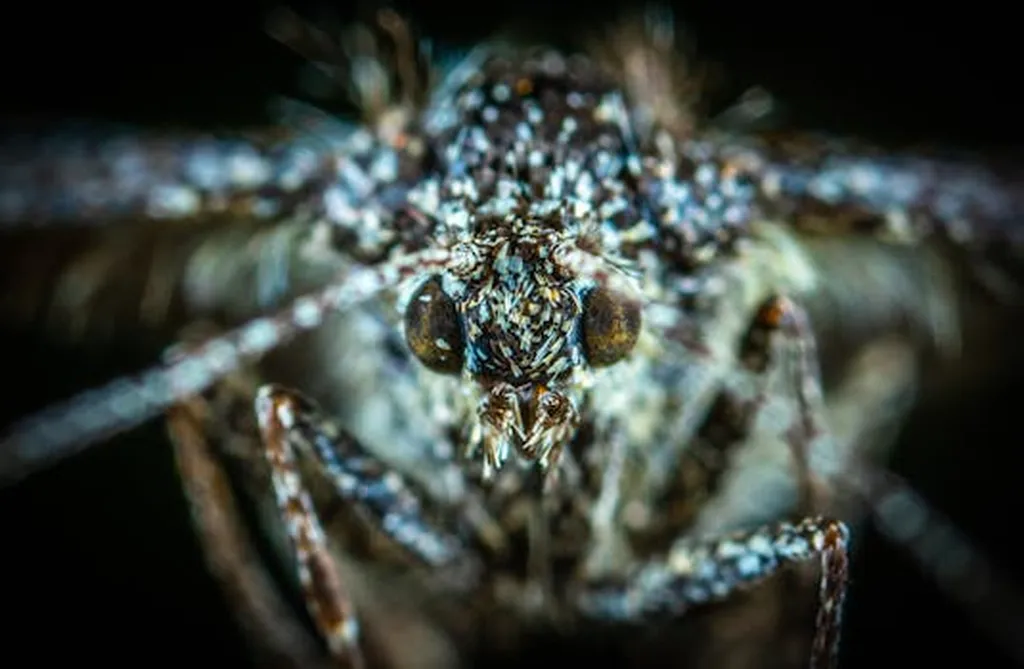In the intricate world of insect behavior and genetics, a groundbreaking study has unveiled a novel interaction between gustatory receptors and the serotonin pathway in silkmoths, potentially reshaping our understanding of pest control and agricultural practices. Led by Zhongjie Zhang from the Jiangsu Key Laboratory of Sericultural and Animal Biotechnology at Jiangsu University of Science and Technology, this research published in *BMC Biology* (which translates to “Basic and Medical Biology”) offers insights that could have significant commercial impacts, particularly in the energy sector.
The study focuses on the silkworm, *Bombyx mori*, a representative of the order Lepidoptera, which includes over 70% of agriculturally important pest species. The researchers developed a sophisticated gene editing tool, the transcription activator-like effector nuclease (TALEN), to delete the GR27-31 cluster, a group of 12 gustatory receptors (GRs) spanning approximately 82 kilobases of genomic sequence. This deletion resulted in a significant delay in the courtship behavior of male silkmoths, impairing their ability to seek out female silkmoths.
“Our findings demonstrate that the loss of GR27-31 function leads to a notable retardation in the courtship process,” Zhang explained. “This suggests that these receptors play a crucial role in the behavioral interactions between male and female silkmoths.”
Interestingly, the study found that the mutation did not affect the male silkmoths’ peripheral responses to volatile sex pheromones, such as bombykol and bombykal, as revealed by electroantennogram analysis. This indicates that the GR27-31 cluster influences courtship behavior through a different mechanism, likely involving the serotonin pathway. Molecular analysis confirmed that the mRNA relative expression of serotonin receptors was significantly altered in the mutant silkmoths.
This research provides the first genetic and phenotypic evidence that gustatory receptors modulate male-female courtship in *B. mori*. Moreover, it reveals for the first time that the serotonin pathway is associated with GR regulation of courtship behavior in insects. The implications of these findings are far-reaching, particularly in the context of pest management and agricultural sustainability.
“Understanding the genetic and molecular basis of insect behavior can lead to the development of more targeted and effective pest control strategies,” Zhang noted. “This could reduce the reliance on broad-spectrum insecticides, which can have detrimental effects on non-target species and the environment.”
In the energy sector, where agricultural practices are closely linked to biofuel production and sustainable land use, these insights could pave the way for more efficient and environmentally friendly pest management solutions. By targeting specific genetic pathways, researchers and agricultural practitioners can develop strategies that minimize crop damage while preserving biodiversity and ecosystem health.
The study’s innovative use of gene editing technology and its focus on the interaction between gustatory receptors and the serotonin pathway open new avenues for research in entomology and behavioral genetics. As we continue to unravel the complexities of insect behavior, the potential for developing sustainable and effective pest control methods becomes increasingly promising.
“This research is a significant step forward in our understanding of the genetic and molecular mechanisms underlying insect behavior,” Zhang concluded. “It highlights the importance of interdisciplinary approaches in addressing agricultural challenges and paves the way for future developments in the field.”

